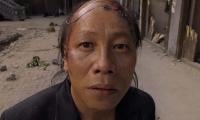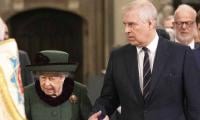6th Karachi Conference begins with exploration of ‘Las Bela’
The three-day-long sixth International Karachi Conference, featuring various sessions and showcasing movies on the changing dynamics of the megacity, kicked off at the Institute of Business Administration (IBA) on Friday.
On the conference’s first day, students of Habib University presented their research papers in a session titled ‘Sacred Geographies of Las Bela’. Discussing the Nanakvanti community in the area, Novaira Khan said that they were monotheists and followed teachings of both Hinduism and Sikhism. She explained that they have many temples and the Shivala temple also had a cluster of smaller temples within it with different symbols of Hindu gods like Santoshi and Hanuman, among others, alongside Buddha.
She added that the followers believe that all other gods are manifestations of gods and their monotheist values emerge from this belief. “The community doesn’t adhere to any caste system and are usually involved in businesses which make them financially stronger than other communities,” she said.
According to Khan, there is no major conflict between them and Muslims living there, and in fact, there is a madrasa which is centrally located there. She said Gansham, a member of the community, even told them that he postponed his wedding out of reverence for the month of Muharram.
Khan further said that women visit their temples between 4am and 6am without any fear and the Muslim community also respects the people by not slaughtering their animals there during Eidul Azha.
Amal Hashim, another student, explored the myth of seven sisters or Saat Sahelian in the Gondrani Caves, 20km north of Lasbela. She said that their traces can be found in both Hindu and Muslim traditions and although there are no proofs about their tale, there is a grave of Bibi Soora aka Barojani as well as Bibi Aisha who goes by the name Asha and the graves are held in high esteem. As per the myth, the seven women prayed to God to save their honour from the lecherous intentions of a man and the ground split open, taking them inside.
Mowwiz Arshad Shaheen spoke about the exalted stature given to two individuals Muhammad ibne Haroon and Robert Groves Sandeman. Haroon was appointed by Hajjaj Bin Yusuf to maintain the rule of caliphate in the area and his tomb continues to be visited by devotees, while Sandeman, who was a British administrator, was also held in high esteem and a tomb was erected after his death, however, now it had become home to vagrants. “It was said that a woman offered a sacrificial goat when her wish was granted at his [Sandeman’s] grave, and upon being told that he was a Christian she said it didn’t matter because she had gotten her wish of bearing a child,” he explained.
Discussing the story of famous folklore Shireen-Farhad, Fatima Siraj said that the rugged landscape of Bela also spoke about the timelessness of love and how the grave of Shireen has a mosque next to it like Sassi’s whose story is also referred in Shah Jo Risalo.
Safina Shehzad Shilwani’s research was about the geometrical patterns and the colours used in the architecture and how there are different forms of expression speaking about a common concept of divinity.
Ali Arshad and Anum Imran dealt with the relationship of environment with the tombs and temples in the area, like centuries-old trees which were in the middle of a temple and the act of tying a knot around a branch with the threads signifying the connection between the tree and religion. They added that in the tomb of Muhammad ibne Haroon, devotees often placed twigs around the grave. Dr Kaleemullah Lashari, who is also a founder and senior adviser of the Karachi Conference, lauded the efforts of the students to dig into the rich history of the region.
-
 81-year-old Florida Woman Arrested After Chilling Murder Plot
81-year-old Florida Woman Arrested After Chilling Murder Plot -
 Cardi B Scores Major Earn Against Offset In Legal Battle
Cardi B Scores Major Earn Against Offset In Legal Battle -
 Bella Hadid Gets Honest About Receiving Support From 'The Beauty' Co-stars
Bella Hadid Gets Honest About Receiving Support From 'The Beauty' Co-stars -
 Nobel Foundation Reaffirms Its Core Responsibility To ‘safeguard The Dignity Of The Nobel Prizes’
Nobel Foundation Reaffirms Its Core Responsibility To ‘safeguard The Dignity Of The Nobel Prizes’ -
 Prince William, Kate Middleton Warned Of Meghan Markle’s UK Return
Prince William, Kate Middleton Warned Of Meghan Markle’s UK Return -
 Melissa Leo Reveals How Winning An Oscar Made Things Worse
Melissa Leo Reveals How Winning An Oscar Made Things Worse -
 Piers Morgan In Hospital: Here's Why
Piers Morgan In Hospital: Here's Why -
 IPhone 18 Pro Leaked: New Design Reveals Radical Corner Camera Layout
IPhone 18 Pro Leaked: New Design Reveals Radical Corner Camera Layout -
 Kung Fu Legend Siu-Lung Leung Passes Away At 77
Kung Fu Legend Siu-Lung Leung Passes Away At 77 -
 Kim Kardashian To Remove Ex Kanye West From Her Kids' Names
Kim Kardashian To Remove Ex Kanye West From Her Kids' Names -
 Queens Mother Arrested After Abducting Child From Court-ordered Visit
Queens Mother Arrested After Abducting Child From Court-ordered Visit -
 Sarah Ferguson Ready To ‘spread Her Wings’ After Separating From ‘disgraced’ Andrew
Sarah Ferguson Ready To ‘spread Her Wings’ After Separating From ‘disgraced’ Andrew -
 Finn Wolfhard Shares How Industry Views Him Post 'Stranger Things'
Finn Wolfhard Shares How Industry Views Him Post 'Stranger Things' -
 Dylan O'Brien Gets Nostalgic After Reunion With Old Friend
Dylan O'Brien Gets Nostalgic After Reunion With Old Friend -
 UK Doctors Warn Screen Time Is Harming Children’s Health
UK Doctors Warn Screen Time Is Harming Children’s Health -
 Meghan Markle To Get Police Protection In UK If Travelling With Archie, Lilibet
Meghan Markle To Get Police Protection In UK If Travelling With Archie, Lilibet



